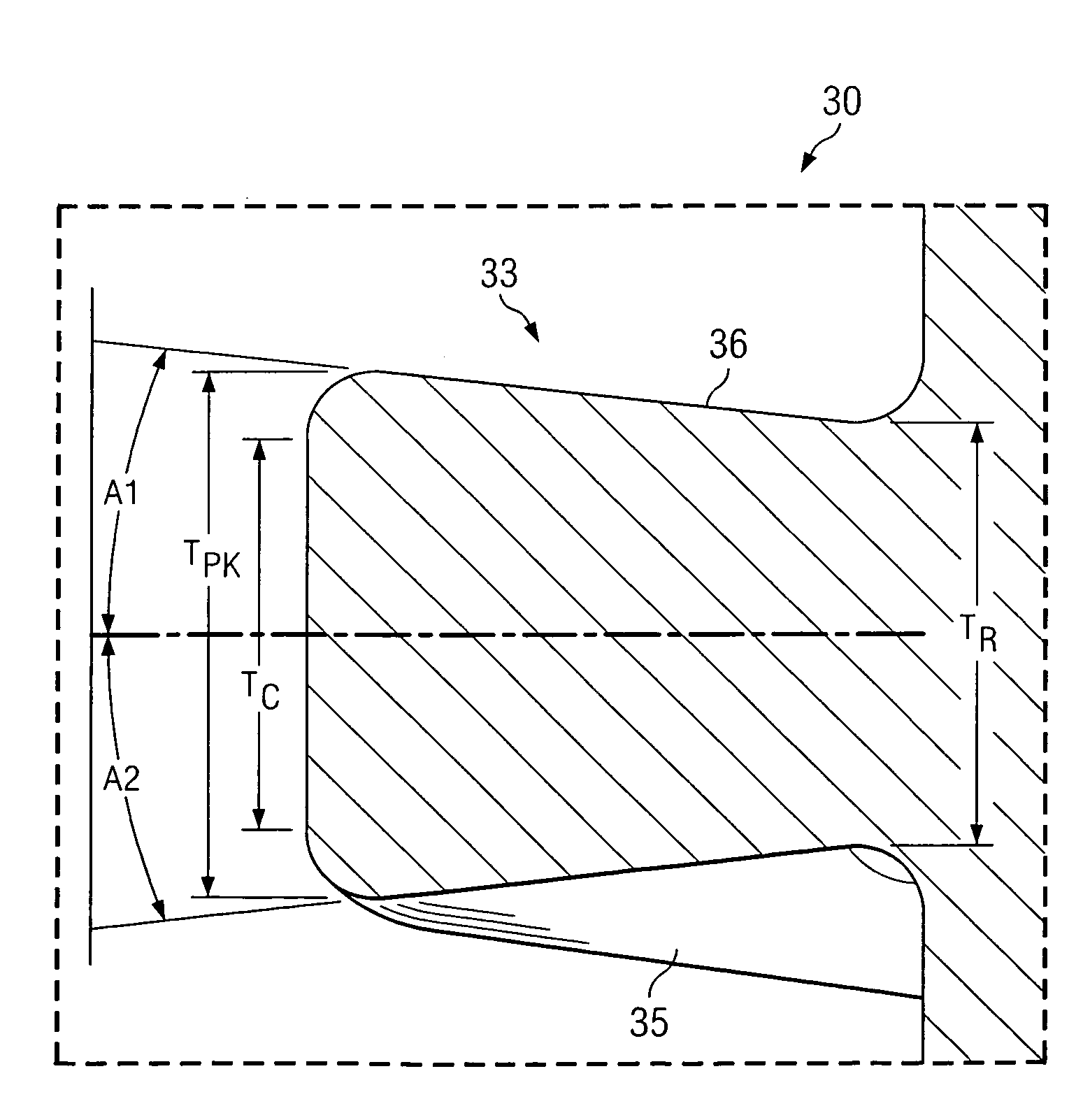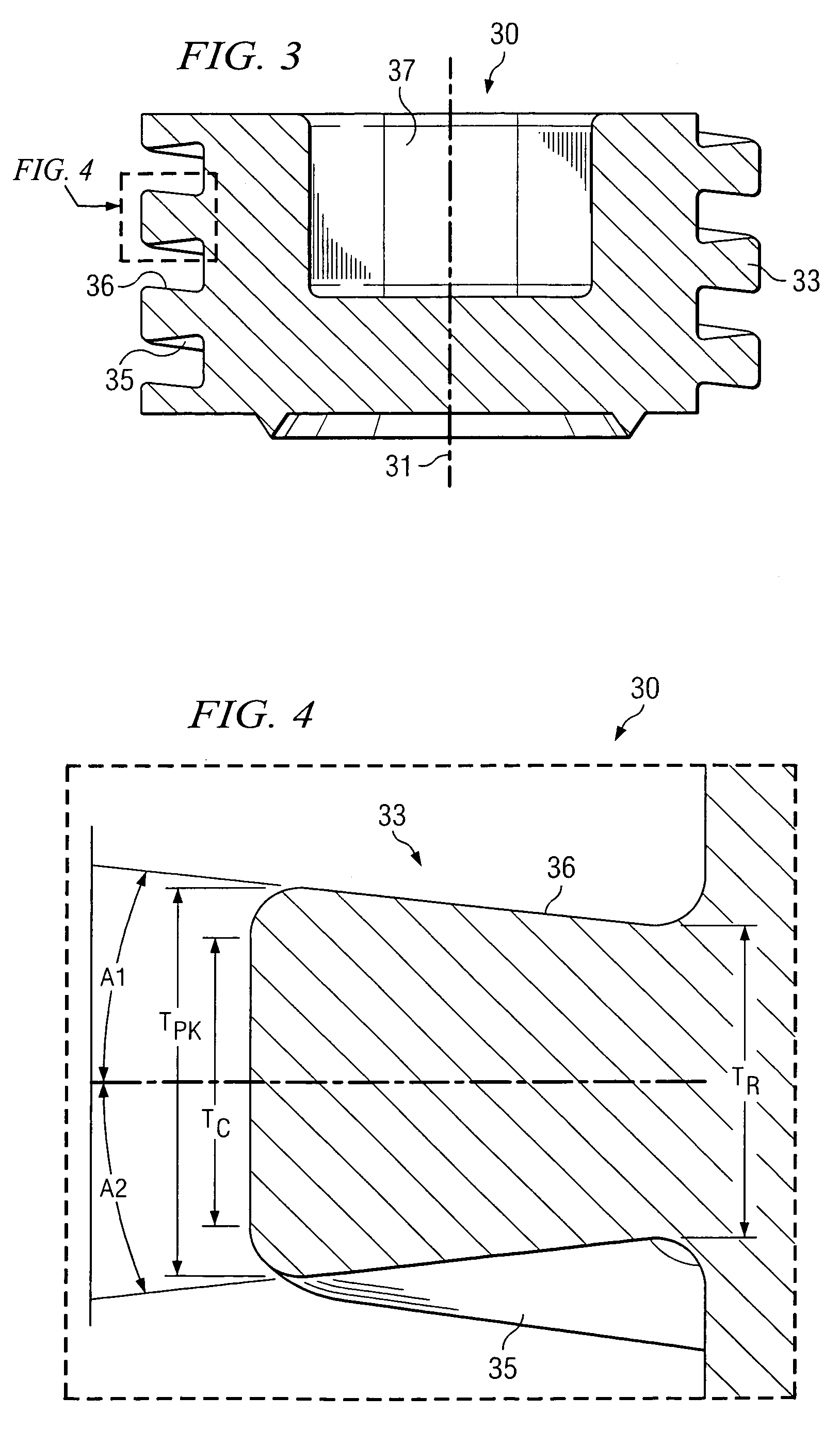Closure member for a medical implant device
a technology of medical implants and closure members, applied in the field of medical implants, can solve problems such as implant removal
- Summary
- Abstract
- Description
- Claims
- Application Information
AI Technical Summary
Benefits of technology
Problems solved by technology
Method used
Image
Examples
Embodiment Construction
[0026]Various embodiments of the present invention are now described with reference to the above figures. As described further below, various embodiments are disclosed for a closure member and complementary receiving member that is particularly useful in medical implant devices. More particularly, in accordance with certain embodiments, a noncontiguous receiving member is included in a medical implant device. The noncontiguous receiving member includes a channel formed by a plurality of noncontiguous walls that include an inner (female) thread that forms a helical spiral about a center longitudinal axis of the channel. That is, the walls forming the channel have a noncontiguous diameter. Such receiving member, in certain implementations, is a cylindrical sleeve that has a longitudinal slit in one or more planes for at least part of its length. A closure member (e.g., set screw) has an outer (male) thread that is configured as a helical spiral about a center longitudinal axis of the ...
PUM
 Login to View More
Login to View More Abstract
Description
Claims
Application Information
 Login to View More
Login to View More - R&D
- Intellectual Property
- Life Sciences
- Materials
- Tech Scout
- Unparalleled Data Quality
- Higher Quality Content
- 60% Fewer Hallucinations
Browse by: Latest US Patents, China's latest patents, Technical Efficacy Thesaurus, Application Domain, Technology Topic, Popular Technical Reports.
© 2025 PatSnap. All rights reserved.Legal|Privacy policy|Modern Slavery Act Transparency Statement|Sitemap|About US| Contact US: help@patsnap.com



